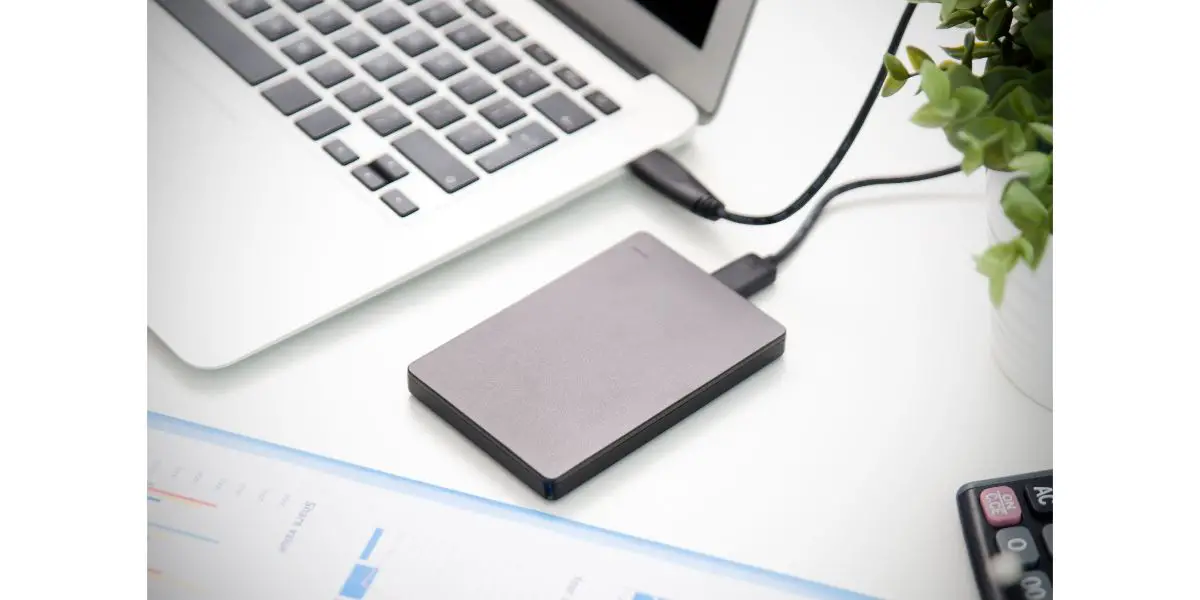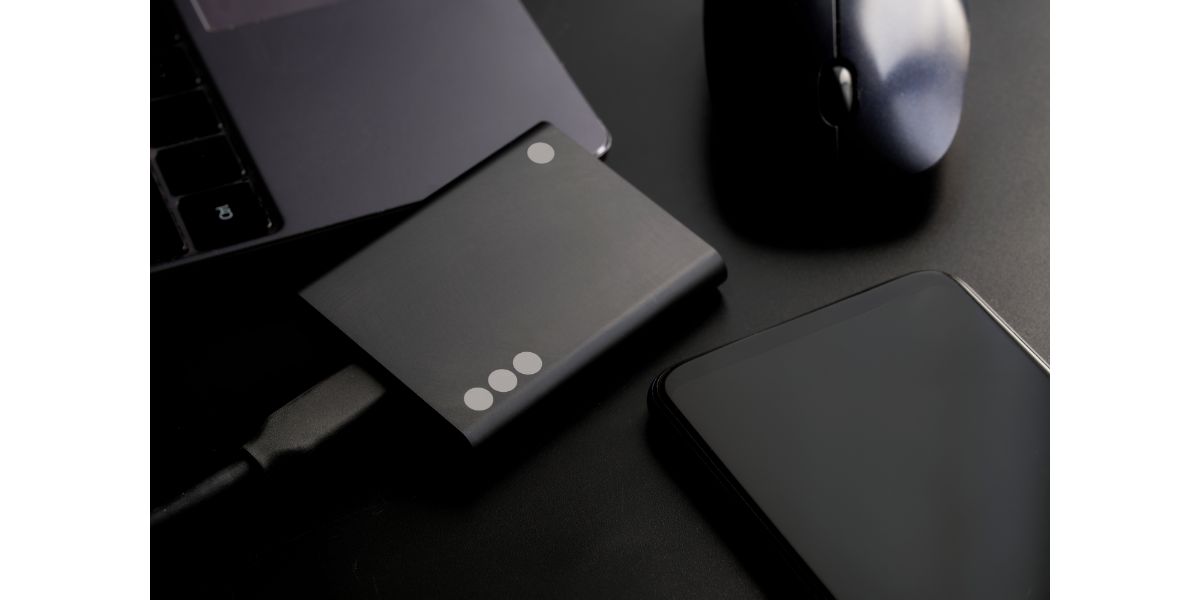Disclaimer: This post may contain affiliate links, meaning we get a small commission if you make a purchase through our links, at no cost to you. For more information, please visit our Disclaimer Page.
Internal hard drives and solid-state drives are used to permanently store information, but their capacity can be limited. If you have a lot of data to store, such as large programs or media, you might need extra storage on your computer. You could upgrade your internal drive, but you can also get an external drive.
Table of Contents
4 Reasons External Hard Drives Are So Much Slower Than Internal Ones
External hard drives are useful for many purposes but remain much slower than internal drives. As much as their technology is advancing, there is no way for external drives to approach the speed of their internal counterparts for a few reasons:
Internal Hard Drives Are Directly Connected to the Computer
Your internal hard drive is attached to the motherboard on your computer via NVMe or SATA connections, which are very fast and facilitate quick access to storage. As a result, it is much easier for the computer to retrieve information from internal hard drives.
External hard drives, on the other hand, are not connected to any internal part of your computer directly. Instead, they are connected to your computer via a USB cable, just like any other peripheral devices you use. A USB cable cannot provide the same speed SATA or NVMe offers.
The Connection of External Hard Drives Is Weaker
USB cables are not only slower but also more vulnerable to physical damage. They are not as durable as the internal connections of your computer, so they can experience problems after a while. On top of that, USB cables are not very reliable, and any mishandling can result in issues.
Physical damage can affect the speed of the USB cables connecting your external hard drive to your computer. These cables are slower in the first place, but they can get even slower if they are in bad shape.
Internal Hard Drives Are Larger Than External Ones
Hard drives can have several different form factors, but they’ve been becoming smaller every year. Most external hard drives are smaller because they need to be portable and lightweight so that you can carry them around and use them whenever you want.
Most internal hard drives, especially those in desktop computers, are larger, typically 3.5 inches. Generally, the larger a hard drive is, the faster it can be because it can achieve its maximum RPM more easily.
Smaller hard drives are not able to achieve the same speed as quickly. Consequently, the larger internal hard drives can transfer information faster than the smaller form factors you can find in external drives.
External Hard Drives Can Be Damaged More Easily
A general disadvantage of external drives is that they are more vulnerable because they are exposed to the environment. Internal hard drives are built into the motherboard and are well protected by the computer case, so it takes a lot to physically damage them.
When you use an external hard drive, you expose it to dust, heat, liquids, or general misuse. If you accidentally drop your external drive and damage it significantly, it may slow down even more.
External SSDs Are Still Slower Than Internal SSDs
Solid-state drives (SSD) were developed shortly after hard drives but only gained popularity in the last couple of decades. They have several advantages over hard drives, including more durability, storage space, and speed. Most laptops these days have internal SSDs because they take up very little space for the same or more amount of storage.
Of course, SSDs are also available in external versions. But, as you may guess, external SSDs are also slower than internal ones. The reasons why this is the case are more or less the same as the ones I mentioned above regarding hard drives.
External SSDs are connected to the computer using a USB cable, which is not as fast as the SATA cable inside the computer and is also more likely to be damaged or faulty, making the device slower. External SSDs can also be more vulnerable to physical damage, though less than hard drives.
Are External SSDs Faster Than Internal HDDs?
While it’s clear that internal devices are faster than external ones for both hard drives and SSDs, you may wonder if external SSDs can be faster than an internal HHD. After all, SSDs are much faster than hard drives.
An external SSD is faster than an internal HDD in most cases. SSDs can be up to 10 times faster than internal HDDs. However, their USB connection can limit them and make them more or less even with internal HHDs in some cases.
The speed of external SSDs depends a lot on the type of USB cable. If you’re using a USB-C or USB 3, your SSDs will be able to achieve higher speeds than internal HHDs because these cables have a bigger bandwidth, allowing a faster information transfer.
On the other hand, if you’re using a USB 2 cable to connect the SSD to your computer, you may not be able to achieve the maximum speed that an SSD can have because of the lower bandwidth cable. Still, chances are your external device will have more or less the same speed as the internal hard drive.
Advantages of External Drives
Even though external storage devices seem to be slower than internal ones, they have a lot of advantages that make them ideal for certain situations. Here are some of the main benefits that external drives can offer you:
- Portability. You can take an external hard drive everywhere you go without taking up much space, even if it has a large capacity.
- Extra storage space. External devices offer a lot more storage space for people who need to store media, data, programs, and more.
- Easy to install. Unlike internal drives, you only need to plug in the cable and check if your device has recognized the drive.
- Ability to connect to multiple devices. An internal drive is only connected to one device, but you can connect your hard drive to multiple devices with no problem.
- Potential to be used for protection. An external drive can help you protect your data from malware. If your computer is suddenly attacked by malware, you can keep your data protected in an isolated device until you solve your problem.
- Low cost. External drives are typically less costly than internal ones, mostly because of their slower performance. You can read more about it in this article.
When to Get an External HDD or SSD
Considering all the advantages and disadvantages of external drives I have explained above, you may be confused as to when you might need one. There are plenty of uses for external hard drives and SSDs, including the following:
- Getting more storage space for media at a low cost.
- Transferring large amounts of data from one device to another.
- Using extra space for gaming and streaming.
- Creating a backup for important data in case of emergencies.
Conclusion
External hard drives or SSDs are great devices that can be very helpful when you need portable and lightweight storage that can be transferred easily.
However, these drives are much slower than their internal counterparts because they are not directly connected to the computer. They can also be damaged more easily.


